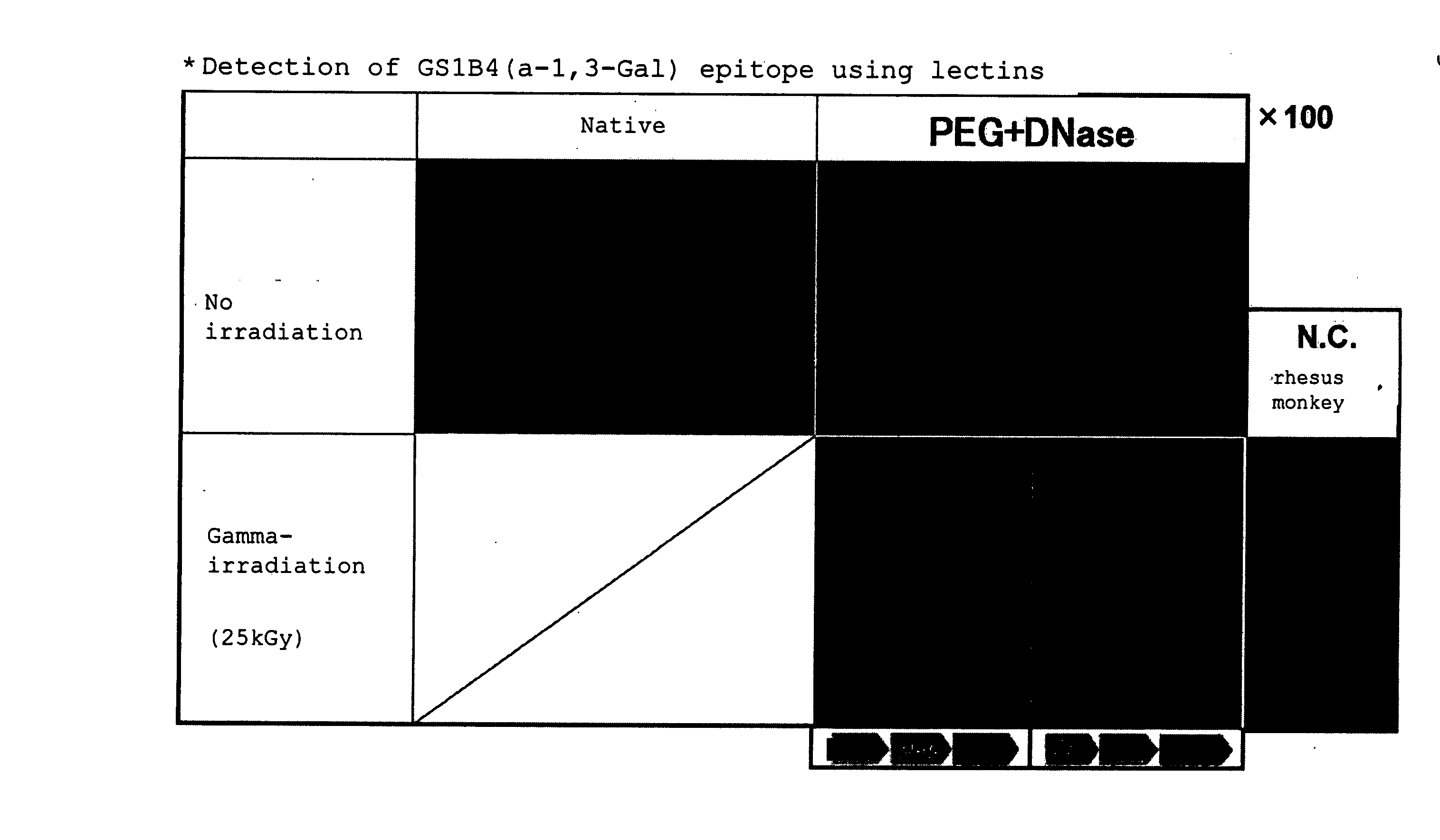Decellularized Tissue and Method of Preparing the Same
- Summary
- Abstract
- Description
- Claims
- Application Information
AI Technical Summary
Benefits of technology
Problems solved by technology
Method used
Image
Examples
example 1
[0431] (Materials and Methods)
[0432] (Decellularization by PEG)
[0433] Porcine carotid arteries were prepared from Hybrid (Labo Products Co. Ltd., Osaka, Japan), and rat aortas were prepared from SD rats (male, 5 weeks old, Nippon Animal Co., Ltd., Tokyo, Japan) under sterile conditions. Animal experiments were conducted in accordance with the guidelines for ethics established by Osaka University.
[0434] Freshly collected porcine carotid arteries and rat aortas were placed in PBS (referred to as PBS (−) in this example; Gibco BRL, Life Technologies Inc. Rockville, Md., USA) containing antibiotics (Gibco BRL, Life Technologies Inc. Rockville, Md., USA) to wash out blood components. The blood vessels were then placed in a decellularizing aqueous solution containing polyethylene glycol (1 g / ml, Nacalai Tesque Inc., Kyoto, Japan) (average molecular weight: 1000), and allowed to stand for 0.5 h. Because of high viscosity of the solution, the blood vessels were gently pressed several tim...
example 2
Comparison of Reactions within Biological Tissue)
[0527] (Method)
[0528] (Immunological Response)
[0529] Aorta wall portions (1×1 cm) of a gamma-ray irradiated and decellularization treated valve according to Example 1 and an SDS-treated decellularization tissue (the artificial valve prepared by SDS decellularization III) according to Example 1 were implanted under the skins of the dorsal portions of SD rats. After one week and two months, the animals were sacrificed. The degree of inflammatory cellular infiltration was scored for evaluation. In this example, porcine native valves was used as controls for comparison.
[0530] (Calcification)
[0531] The specimens were collected one week and two months after subcutaneous implantation, followed by von Kossa staining for evaluation of calcification. Also, Ca concentration within the tissue was measured with an atomic absorption spectrometry. The Ca concentration was measured and quantified as follows. The tissue was placed in concentrated...
example 3
Confirmation of Cell Replacement
[0541] Comparison of Reactions in Biological Tissue Between Each Valve
[0542] Decellularization treated porcine forearm arteries according to Example 1 are implanted into dog femoral aortas. The animals are sacrificed after 10 days. The degree of inflammatory cellular infiltration is compared and studied.
[0543] (Results)
[0544] It is found that there is substantially no rejection reaction in the decellularized tissue of the present invention, and thus it is understood that global structure is not impaired. Further, by observing the implanted tissue, it is also possible to confirm that the decellularized tissue is replaced with self cells.
PUM
 Login to View More
Login to View More Abstract
Description
Claims
Application Information
 Login to View More
Login to View More - R&D
- Intellectual Property
- Life Sciences
- Materials
- Tech Scout
- Unparalleled Data Quality
- Higher Quality Content
- 60% Fewer Hallucinations
Browse by: Latest US Patents, China's latest patents, Technical Efficacy Thesaurus, Application Domain, Technology Topic, Popular Technical Reports.
© 2025 PatSnap. All rights reserved.Legal|Privacy policy|Modern Slavery Act Transparency Statement|Sitemap|About US| Contact US: help@patsnap.com



